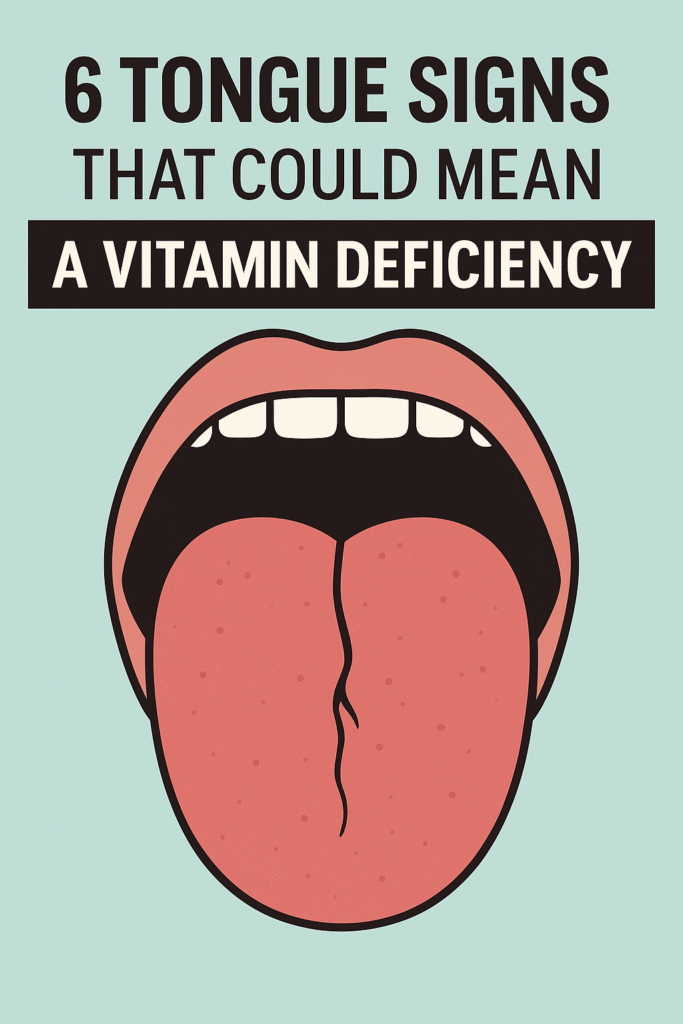
⚠️ Affiliate Disclaimer: This post may contain affiliate links, which means I may earn a small commission — at no extra cost to you — if you make a purchase through one of these links. I only recommend products or services I genuinely trust and believe can provide value. Thank you for supporting My Medical Muse!
13 Surprising Reasons Why Your Body Feels Cold Even in a Warm Room
You’re indoors, the heater is on (or the sunshine is warming the space), yet your body feels chilly. You may wrap yourself in a blanket, yet the cold “seeps in.” You wonder, why do I feel cold when I should be warm?
This isn’t just you, many people report that even in an environment that others find comfortable, their body feels cold. This sensation can be frustrating, distracting, or even worrying. In many cases, it’s harmless, in others it can be a clue pointing toward an underlying health issue.
In this article, we’ll explore:
- What “feeling cold” really means physiologically
- Common causes and contributing factors
- When feeling cold is normal vs when it’s a red flag
- How to assess or diagnose the issue
- Strategies and remedies to feel warmer
- Prevention, long-term management, and when to see a doctor
The Physiology of Cold Sensation
To understand why you sometimes feel cold even in a warm room, it helps to look at how your body regulates temperature and perceives sensations of heat and cold.
The Body’s Internal Thermostat
Your body works hard to maintain a stable internal temperature of about 36.5-37.5°C. This process called thermoregulation keeps your internal organs functioning optimally no matter what the environment is doing.
At the center of this system is a small but powerful part of the brain called the hypothalamus, think of it as your body’s thermostat. The hypothalamus constantly monitors your core temperature through nerve signals and chemical messengers from the skin, muscles, and internal organs.
When it detects even a slight drop in temperature, it triggers automatic responses designed to restore balance, including:
- Vasoconstriction: Narrowing blood vessels near the skin to reduce heat loss.
- Shivering: Rapid, involuntary muscle contractions that generate heat.
- Metabolic adjustment: Stimulating the thyroid and adrenal glands to boost metabolism and energy production.
- Behavioral signals: Making you feel cold so you instinctively add layers, seek warmth, or move around to generate heat.
If any step in this system, brain signaling, hormone release, or blood flow is disrupted, your body may struggle to maintain warmth or correctly interpret temperature. That’s when you might feel cold even when everyone else feels fine.
How Insulation, Blood Flow, and Heat Distribution Work
Feeling cold isn’t always about your actual temperature, it’s often about how heat is distributed and retained throughout your body.
- Body Fat as Insulation:
Subcutaneous fat (the layer of fat beneath the skin) acts like natural insulation, slowing heat loss. People with lower body fat due to genetics, dieting, or intense exercise lose heat faster and tend to feel colder. - Muscle Mass and Heat Production:
Muscles generate heat as they contract, even during rest. That’s why people with more lean muscle tend to feel warmer. Conversely, low muscle mass means lower baseline heat production. - Circulation and Warmth Distribution:
Warm blood carries heat from the body’s core to the skin and extremities. When circulation is sluggish due to inactivity, vascular issues or even dehydration. Your hands, feet, and nose may feel cold first. - Vasoconstriction and Energy Conservation:
In cool environments, your body automatically narrows surface blood vessels to conserve core warmth. While this protects vital organs, it can make your limbs and skin feel icy. For some people, this response is overactive, causing persistent cold sensations even in mild conditions.
Together, these systems- body fat, muscle activity, blood circulation, and vessel control determine how warm or cold you feel, not just what the thermostat reads.
Cold Sensitivity (Cold Intolerance)
Some people’s bodies overreact to temperature changes, a phenomenon known as cold intolerance or cold sensitivity. It describes feeling cold more often or more intensely than others, even when the room is warm or the weather is mild.
Cold intolerance itself isn’t a disease, but rather a symptom of something deeper. It can occur when your body’s thermostat, blood flow, or metabolism is slightly “out of sync.”
Common underlying contributors include:
- Hormonal changes, especially thyroid or adrenal imbalance.
- Anemia or nutrient deficiencies, which reduce oxygen and energy delivery.
- Poor circulation, limiting heat distribution.
- Low body weight or muscle mass, reducing insulation and heat generation.
- Nerve sensitivity, which can distort your perception of temperature.
When you experience cold intolerance frequently, it’s your body’s way of signaling that one or more systems responsible for warmth, metabolic, circulatory, or nervous may need attention.
Feeling cold even in a warm environment isn’t just about the air around you, it’s about how your body produces, conserves, and perceives heat. When thermoregulation works efficiently, you feel comfortable but when metabolism slows, circulation weakens, or insulation thins, your body may interpret “normal” temperatures as cold.
Common Causes and Contributing Factors
Here are the major reasons you might feel cold even in a warm room. Often, several factors overlap, from body composition and hormones to circulation and nutrition.
1. Low Body Weight or Low Body Fat
People with low body fat often feel colder because they have less natural insulation to retain heat. Subcutaneous fat acts like a protective thermal layer, slowing down how quickly warmth escapes through the skin.
At the same time, muscle tissue generates heat even when you’re at rest. So having less muscle mass means your body produces less internal warmth.
If you’ve recently lost weight quickly, whether through dieting, illness, or stress, you may notice you feel colder than before. That’s your body adjusting to reduced insulation and lower metabolic activity.
2. Calorie Deficit or Under-Eating
Your body needs calories to fuel metabolism and metabolism is what generates heat. When you skip meals or consume too few calories for your needs, your body shifts into energy-conservation mode.
In this state, your metabolic rate drops, heart rate slows slightly, and your core temperature can dip. That’s why people who fast, diet aggressively, or under-eat for long periods often experience chills or cold hands and feet.
3. Hypothyroidism (Underactive Thyroid)
The thyroid gland plays a key role in regulating metabolism. When it’s underactive, a condition known as hypothyroidism, your metabolism slows, leading to reduced heat production.
Cold intolerance is one of the hallmark symptoms, along with fatigue, weight gain, dry skin, and hair loss.
Diagnosis typically involves checking thyroid-stimulating hormone (TSH) and thyroid hormone levels (T3 and T4) through blood tests. Treatment with thyroid medication often restores warmth and energy.
4. Anemia (Low Red Blood Cell Count)
Red blood cells carry oxygen through your bloodstream, and oxygen is vital for generating energy and warmth.
When you have anemia, your blood can’t deliver enough oxygen to tissues, making your hands and feet feel cold, even when your environment is warm.
Common causes include:
- Iron deficiency anemia (most frequent type)
- Vitamin B12 or folate deficiency
- Chronic disease anemia
Other clues include fatigue, pale skin, dizziness, or shortness of breath. Treating the root cause often resolves cold sensitivity.
5. Poor Circulation or Vascular Issues
If your blood flow is restricted, warm blood can’t reach your extremities effectively, leaving your hands, feet, or nose cold. Some of the most common circulation-related causes include:
- Raynaud’s phenomenon: Small blood vessels in your fingers or toes overreact to cold or stress, turning the skin white or blue.
- Peripheral artery disease (PAD): Plaque buildup in arteries reduces blood flow to the limbs.
- Low blood pressure or dehydration: These can also reduce perfusion to the body’s surface.
If your coldness is concentrated in your extremities and often accompanied by tingling or color changes, poor circulation may be the culprit.
6. Hormonal and Gender Factors
Women tend to feel colder than men, and this isn’t just perception, it’s biology.
Fluctuating estrogen and progesterone levels throughout the menstrual cycle can affect body temperature and blood flow.
Additionally, women generally have a slightly lower basal metabolic rate and distribute body fat differently, both of which can influence how warm or cold they feel. During menopause, temperature regulation may fluctuate even more dramatically due to hormonal shifts.
7. Vitamin and Mineral Deficiencies
Your body needs certain nutrients to produce energy and maintain warmth. Deficiencies in key vitamins and minerals can contribute to feeling cold, such as:
- Iron: Needed for hemoglobin and oxygen delivery.
- Vitamin B12: Supports red blood cell formation and nerve health.
- Copper: Helps regulate metabolism and iron absorption.
- Folate: Works with B12 to maintain healthy red blood cells.
If your diet lacks variety or you follow restrictive eating patterns, subtle deficiencies can build up and affect how your body manages heat.
8. Chronic Illness or Autoimmune Disease
Chronic inflammatory or autoimmune conditions like lupus, rheumatoid arthritis, or fibromyalgia can interfere with blood flow, nerve function, and metabolism.
These diseases often cause systemic inflammation, which can disrupt how your body regulates temperature. People with autoimmune conditions frequently report cold sensitivity, especially in their hands and feet.
9. Nerve Damage (Neuropathy)
When nerves that detect temperature or regulate blood flow are damaged, your perception of heat and cold can become distorted.
This is known as peripheral neuropathy, and it’s often linked to diabetes, vitamin deficiencies, or autoimmune diseases.
You might notice:
- A burning or tingling sensation
- Numbness in the feet or hands
- Feeling cold even when skin temperature is normal
Addressing the underlying cause of neuropathy can help restore temperature balance.
10. Medication Side Effects
Certain medications may interfere with temperature regulation or circulation.
Common examples include:
- Beta-blockers: Often prescribed for high blood pressure or heart conditions, they reduce blood flow to the skin.
- Antidepressants or antipsychotics: Can alter nervous system activity.
- Hormonal medications: May impact metabolism or blood vessel behavior.
If you noticed feeling colder after starting a new medication, discuss this with your doctor, a dosage adjustment or alternative might help.
11. Sleep Deprivation and Fatigue
Lack of quality sleep doesn’t just make you tired, it affects your body’s ability to regulate temperature.
When you’re sleep deprived, your metabolic and hormonal systems become sluggish. Your body conserves energy by lowering heat production, making you more sensitive to cold.
12. Stress and Anxiety
When you’re stressed or anxious, your body activates the “fight or flight” response, which constricts blood vessels in your extremities. This redirects blood toward your core organs for protection, leaving your hands and feet feeling cold.
Chronic stress can also elevate cortisol levels and disrupt circulation, making you feel persistently chilly.
13. Aging
As we age, the body’s ability to regulate temperature declines.
Older adults tend to have:
- A slower metabolism
- Thinner skin and less insulating fat
- Weaker circulation and reduced sweat gland activity
This combination makes it harder to stay warm, even in rooms that feel comfortable to others.
When Feeling Cold Is Normal vs. When It’s a Red Flag
Feeling cold isn’t always cause for concern but sometimes, it’s your body’s way of warning you something deeper is going on.
When It’s Normal
Temporary cold sensations are part of everyday life. They can happen if you:
- Spend time in air conditioning or drafty spaces
- Wear damp clothes
- Sit still for long periods (reducing circulation)
- Skip meals or fast temporarily
- Experience hormonal fluctuations during your menstrual cycle
- Cool down after exercise
If warmth returns once you eat, move around, or add a layer, it’s typically harmless and part of normal body regulation.
When It’s a Red Flag
Persistent or unexplained coldness especially if limited to certain areas or paired with other symptoms, may signal an underlying health issue.
Seek medical advice if you notice:
- Fatigue, hair loss, or weight gain: possibly hypothyroidism
- Pale skin or dizziness: possibly anemia
- Numbness or color changes in fingers/toes: possibly Raynaud’s or neuropathy
- Joint pain, rashes, or inflammation: possibly autoimmune disorder
- Slow heart rate, mood changes, or low energy: possibly hormonal or metabolic imbalance
If your feeling cold episodes are frequent, worsening, or accompanied by systemic symptoms, it’s wise to consult a doctor for evaluation.
How to Diagnose or Assess the Issue
If you constantly feel cold, your doctor may perform a few steps to pinpoint the cause.
Medical History
Expect questions about:
- Duration, frequency, and location of the sensation
- Diet, weight, and activity level
- Sleep quality and stress levels
- Medication or chronic health conditions
- Other symptoms (fatigue, weakness, numbness)
Physical Examination
The doctor may check:
- Skin color, texture, and temperature
- Circulation in hands and feet
- Thyroid gland for swelling or tenderness
- Signs of anemia or nerve damage
Common Lab Tests
Test | What It Evaluates | Why It’s Relevant |
CBC (Complete Blood Count) | Red blood cells, hemoglobin | Detects anemia |
Thyroid Function (TSH, T3, T4) | Thyroid hormone balance | Diagnoses hypothyroidism |
Iron Studies / Ferritin | Iron storage | Confirms iron deficiency |
Vitamin B12 / Folate | Nutritional status | Detects B12-related anemia |
Metabolic Panel | Blood sugar, electrolytes | Identifies energy issues |
Autoimmune Markers (ANA, ESR, CRP) | Inflammation | Screens for autoimmune disease |
Peripheral Vascular Testing | Blood flow | Detects PAD or Raynaud’s |
Strategies and Remedies to Feel Warmer
If your test results are normal but you still feel cold, lifestyle changes can help.
- Eat Enough Calories
Undereating lowers your metabolism. Focus on whole foods, complex carbs, and healthy fats. - Include Iron- and B12-Rich Foods
Eggs, spinach, lentils, red meat, and fortified cereals boost oxygen transport. - Add Healthy Fats
Avocados, nuts, seeds, and olive oil improve energy and insulation. - Stay Hydrated
Dehydration thickens blood and slows circulation. Aim for steady fluid intake. - Build Muscle
Muscle generates heat. Add light resistance or strength training to your routine. - Improve Circulation
Try gentle aerobic exercise, warm baths, or contrast showers. Avoid smoking and excess caffeine. - Prioritize Sleep
Poor rest alters hormones that regulate metabolism and body temperature. - Manage Stress
Practice meditation, yoga, or deep breathing to reduce cold-triggering tension. - Dress in Layers
Use moisture-wicking, insulating, and protective layers. Keep socks and neck warm indoors. - Move Frequently
Don’t sit still too long, walk, stretch, or use a standing desk to boost circulation.
Prevention and Long-Term Management
To reduce ongoing cold sensitivity, focus on a balanced, sustainable lifestyle.
- Eat Regular, Nutritious Meals
Avoid extreme dieting or fasting that reduces metabolic heat. - Stay Active
Movement increases muscle tone and blood flow, helping maintain warmth. - Maintain a Healthy Weight
Avoid sudden fat or muscle loss that reduces insulation. - Get Regular Health Checkups
Routine blood work can detect thyroid, anemia, or hormonal issues early. - Adjust Your Environment
Keep room temperature between 21-24°C, use a humidifier, and wear layers as needed.
When to See a Doctor
While feeling cold occasionally is normal, persistent or unexplained coldness can sometimes signal an underlying medical issue.
You should consider seeing a doctor if:
- You constantly feel cold, regardless of the room temperature or weather.
- Your fingers or toes change color (white, blue, or red), especially when exposed to cold or stress.
- You experience chronic fatigue, dizziness, or unexplained weight changes.
- You notice dry skin, hair loss, or brittle nails, which can indicate thyroid or nutrient problems.
- The cold sensation interferes with your daily comfort, work, or sleep.
During a medical visit, your doctor will likely ask about your symptoms, review your diet and medications, and run tests such as thyroid function, iron levels, or blood circulation studies.
Early diagnosis is important, many causes of chronic cold sensitivity, such as anemia, thyroid disorders, or poor circulation, are highly treatable once identified.
Prompt evaluation not only restores comfort but can prevent complications related to oxygen delivery, metabolism, and tissue health.
Key Takeaways
Feeling cold in a warm environment can be more than just a quirky sensitivity, it’s your body’s signal that something might need attention.
Here’s what to remember:
- Common causes: Low body fat, poor circulation, anemia, thyroid problems, and nutritional deficiencies are the top reasons people feel cold indoors.
- Lifestyle factors: Undereating, stress, dehydration, and lack of sleep can lower metabolism and intensify cold sensitivity.
- Self-care helps: Balanced nutrition, regular exercise, hydration, and stress management can significantly improve temperature balance.
- Don’t ignore persistent symptoms: If you’re always cold or develop related signs like fatigue, numbness, or hair loss, a medical checkup can reveal and often easily fix the underlying issue.
In most cases, with the right diet, movement, and medical support, you can restore your body’s warmth naturally and comfortably.
👩⚕️ Need Personalized Health Advice?
Get expert guidance tailored to your unique health concerns through MuseCare Consult. Our licensed doctors are here to help you understand your symptoms, medications, and lab results—confidentially and affordably.
👉 Book a MuseCare Consult NowRelated Blog Post You Might Like:
- Why Do My Hands Swell in the Morning? 9 Surprising Reasons & Simple Fixes
- 10 Powerful Reasons Why You Get Dizzy Right Before Your Period
- 7 Surprising Reasons Why Your Body Temperature Keeps Changing Randomly
- Why Your Legs Feel Cold but Your Body Feels Hot: 9 Hidden Reasons and What to Do
- Why Your Fingers Turn White When It Is Cold : 7 Hidden Reasons
- 10 Surprising Reasons Why You Wake Up Drenched in Sweat But Feel Cold
- Why Does My Stomach Hurt After Drinking Cold Water? 7 Powerful Reasons Explained
- Why Does My Throat Feels Scratchy but No Cold? 12 Powerful Causes & Fixes
- 10 Proven Ways: How to Treat Eczema on Your Hands During Cold Weather


